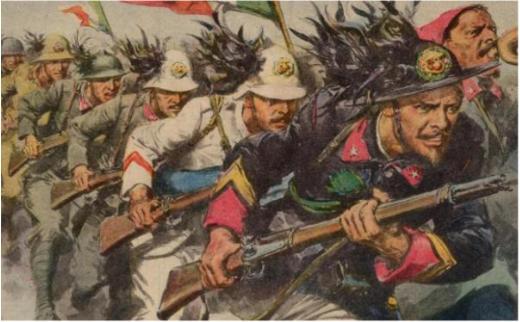|
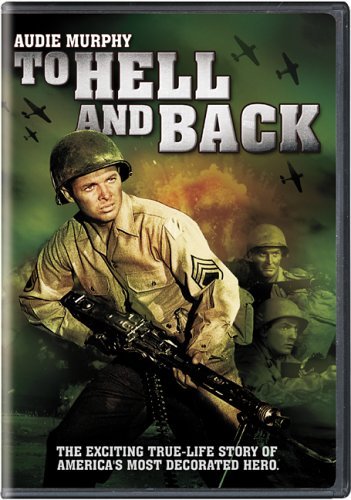
*Medal of Honor
Audie Leon Murphy, Second Lieutenant, U.S. Army, Company B, 15th Infantry, 3d Infantry Div.
Holtzwihr France, 26 January 1945.
*Or
Congressional Medal Of Honor, the foremost U.S. military decoration,
instituted by Congress in 1861 for the navy and in 1862 for the army, at
first awarded only to enlisted men, with officers being permitted to
receive the award later. It is given for “conspicuous gallantry and
intrepidity at the risk of life, above and beyond the call of duty.” The
army medal has always been.awarded solely for valour in combat

AMERICA'S MOST DECORATED WAR HERO
Distinguished Service Cross
Silver Star with First Oak Leaf Cluster
Legion of Merit
Bronze Star Medal with "V" Device and First Oak Leaf Cluster
Purple Heart with Second Oak Leaf Cluster
U.S. Army Outstanding Civilian Service Medal
Good Conduct Medal
Distinguished Unit Emblem with First Oak Leaf Cluster
American Campaign Medal
European-African-Middle Eastern Campaign Medal with One Silver Star, Four
Bronze Service Stars (representing nine campaigns) and one Bronze Arrowhead
(representing assault landing at Sicily and Southern France)
World War II Victory Medal
Army of Occupation Medal with Germany Clasp
Armed Forces Reserve Medal
Combat Infantry Badge
Marksman Badge with Rifle Bar
Expert Badge with Bayonet Bar
French Fourragere in Colors of the Croix de Guerre
French Legion of Honor, Grade of Chevalier
French Croix de Guerre With Silver Star
French Croix de Guerre with Palm
Medal of Liberated France
Belgian Croix de Guerre 1940 Palm
Torna
all'indice delle schede
Chiudi
le schede
Torna all'indice di Carneade
|
|
Audie Murphy è nato il 20 giugno 1923 nella contea di Hunt in Texas.
Murphy era il sesto di 13 figli di cui solo 9
arrivarono alla maggior età. Di famiglia poverissima
contribuiva al pasto quotidiano cacciando conigli selvatici, cosa che gli riusciva magnificamente col suo primo
fucile e la sua mira infallibile. Nel 1936 il padre abbandonò la famiglia e Audie interruppe gli studi per lavorare nelle fattorie.
Fece tanti altri lavori, fino al 1941, cercando di aiutare come poteva la famiglia. I suoi sforzi di arruolarsi cozzavano sempre contro la minore età. Appena 18enne
lo "Zio Sam" lo arruolò e venne mandato a Fort Wolters in Texas. I suoi tentativi precedenti di arruolamento si scontravano,
oltre che con l'età, con la sua altezza che veniva considerata troppo
bassa (cm 165 !!). Anche ora il suo comandante lo voleva destinare alle cucine o alla panetteria. Nel marzo del 1943 fu assegnato
finalmente alla compagnia B del I/15° fanteria (3a divisione in
partenza per l'Africa).
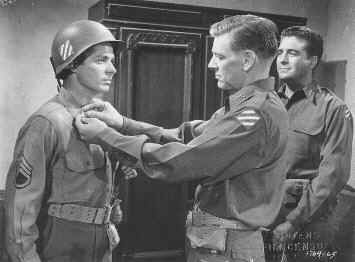 Si guadagnò pian piano i gradi da caporale a sergente fino a quando, nel 44 (14 ottobre) ebbe quelli da ufficiale. Le sue campagne di guerra vanno dall’invasione della Sicilia del
Luglio 43
(ma prima era stato anche in Africa a Casablanca) alla Francia meridionale. La prima decorazione, la Bronze Star, venne nel marzo del 44 per lo sbarco di
Anzio, la seconda con quello in Provenza, nella Francia Meridionale.
Altre medaglie intanto piovevano mensilmente 15 agosto, 15 settembre, 5 e 26 ottobre 44. In questa
ultima data venne gravemente ferito ma non si allontanò dal fronte. Il 26 gennaio del 45 era ancora convalescente, quando venne chiamato a sostituire il comandante della compagnia B…He was still in a state of convalescence on January 26, 1945 when Audie earned the Nation's highest tribute for action in the Riedwihr Woods near Holtzwihr, France. The Third Division was engaged in fierce fighting in the Colmar Pocket which consisted of a heavily fortified bulge stretching from the Rhine into France. At midnight on January 25, Company B moved through the Riedwihr Woods, but fierce fighting reduced the company to two officers and about 28 men. Despite five replacements, the company remained critically under strength. As the senior ranking officer, Audie was placed in charge of the company and was ordered to advance to the edge of the forest and hold the line until relieved. Company B was supported by two tank destroyers
(TD) from the 601st Tank battalion which were attached to the 15th Infantry, but they would soon be out of action. The frozen ground was covered with 10-12 inches of snow; it was impossible for the men to dig in. Audie's company was strung along a three hundred yard front at the edge of the woods. Company B was in a defensive position when at 1400 hours, on January 26, 1945, the Germans began a fierce attack from Holtzwihr. This assault consisted of six heavy Jagdpanther tanks supported by approximately 250 German infantry attired in white snow capes. The first tank destroyer slid into a drainage ditch and could not extricate itself. The second TD received a direct hit from a German 88 , killing the commander and gunner. Seeing that the situation was desperate, Audie ordered his men to fall back to an alternate position. At this time, Audie began calling in artillery supported by a field telephone through Battalion Headquarters. Si guadagnò pian piano i gradi da caporale a sergente fino a quando, nel 44 (14 ottobre) ebbe quelli da ufficiale. Le sue campagne di guerra vanno dall’invasione della Sicilia del
Luglio 43
(ma prima era stato anche in Africa a Casablanca) alla Francia meridionale. La prima decorazione, la Bronze Star, venne nel marzo del 44 per lo sbarco di
Anzio, la seconda con quello in Provenza, nella Francia Meridionale.
Altre medaglie intanto piovevano mensilmente 15 agosto, 15 settembre, 5 e 26 ottobre 44. In questa
ultima data venne gravemente ferito ma non si allontanò dal fronte. Il 26 gennaio del 45 era ancora convalescente, quando venne chiamato a sostituire il comandante della compagnia B…He was still in a state of convalescence on January 26, 1945 when Audie earned the Nation's highest tribute for action in the Riedwihr Woods near Holtzwihr, France. The Third Division was engaged in fierce fighting in the Colmar Pocket which consisted of a heavily fortified bulge stretching from the Rhine into France. At midnight on January 25, Company B moved through the Riedwihr Woods, but fierce fighting reduced the company to two officers and about 28 men. Despite five replacements, the company remained critically under strength. As the senior ranking officer, Audie was placed in charge of the company and was ordered to advance to the edge of the forest and hold the line until relieved. Company B was supported by two tank destroyers
(TD) from the 601st Tank battalion which were attached to the 15th Infantry, but they would soon be out of action. The frozen ground was covered with 10-12 inches of snow; it was impossible for the men to dig in. Audie's company was strung along a three hundred yard front at the edge of the woods. Company B was in a defensive position when at 1400 hours, on January 26, 1945, the Germans began a fierce attack from Holtzwihr. This assault consisted of six heavy Jagdpanther tanks supported by approximately 250 German infantry attired in white snow capes. The first tank destroyer slid into a drainage ditch and could not extricate itself. The second TD received a direct hit from a German 88 , killing the commander and gunner. Seeing that the situation was desperate, Audie ordered his men to fall back to an alternate position. At this time, Audie began calling in artillery supported by a field telephone through Battalion Headquarters.
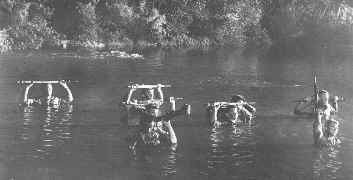 With his ammunition depleted, Audie decided to mount the burning TD and employ it's
.50 caliber machine gun. After removing the dead TD commander, Audie sprayed deadly fire upon the German infantry. With the TD in danger of blowing up at any moment, the Germans gave it a wide berth. The black smoke streaming from the TD made it difficult for the Germans to see Audie, but it also reduced his view of the advancing infantry. At this
point,
Audie called in more artillery support even though it was dangerously close to his own position. For an hour, Audie managed to kill or wound approximately 50 to 100 Germans and confused the rest as to the source of the deadly fire. The German tanks, lacking infantry support, were forced to withdraw. Audie jumped from the burning TD only to hear it explode seconds later. Thus ended one of the most famous Medal of Honor actions of World War II. With his ammunition depleted, Audie decided to mount the burning TD and employ it's
.50 caliber machine gun. After removing the dead TD commander, Audie sprayed deadly fire upon the German infantry. With the TD in danger of blowing up at any moment, the Germans gave it a wide berth. The black smoke streaming from the TD made it difficult for the Germans to see Audie, but it also reduced his view of the advancing infantry. At this
point,
Audie called in more artillery support even though it was dangerously close to his own position. For an hour, Audie managed to kill or wound approximately 50 to 100 Germans and confused the rest as to the source of the deadly fire. The German tanks, lacking infantry support, were forced to withdraw. Audie jumped from the burning TD only to hear it explode seconds later. Thus ended one of the most famous Medal of Honor actions of World War II.
Nel settembre del '45 lascia il servizio attivo e cinque anni dopo viene promosso capitano nella Guardia Nazionale (maggiore nel
'56). La
sua storia fece presto il giro del mondo e dei settimanali (Life). Un vecchio leone di Hollywood, James Cagney, si mise
allora in testa di farne
un attore da film western*. Il suo più famoso film è
l'autobiografico "To Hell and Back”o “All’Inferno e Ritorno”
(1955) diretto da Jesse
Hibbs, che per 20 anni
restò campione d’incassi all’Universal poi altre 44 pellicole.
“All’Inferno e
Ritorno” l'ho visto l'anno dopo l'uscita in una piccola sala di terza visione dove mio
padre mi portò (avevo 8 anni) sulla canna della bicicletta per diversi chilometri, di
una bicicletta polacca col freno contropedale,molto comune nel nord
Europa,che di suo aveva una lunga storia di guerra, di esodi etc.., tanto vecchia
quanto la vicenda del film. Bicicletta poi che la stradale
regolarmente voleva sanzionare perchè priva di freni (il contropedale
non si vede). Altri tempi allora: si prendevano le multe e il sequestro
del mezzo per queste cose e per il campanello sul manubrio, per la luce:
Ora non si va in galera se non per strage: mi devo essere perso qualcosa
nel codice della strada e nell'ordinamento giudiziario italiano.

*One of his better pictures was Night Passage (1957), a western in which he played the kid brother of James Stewart. He received critical acclaim for his role in director John Huston's The Red Badge of Courage (1951) and again in Huston's The Unforgiven
(1960).
http://www.mymovies.it/dizionario/biblio.asp?A=1636
Il 28 maggio 1971 moriva in un incidente aereo sui monti Appalachi. E’sepolto ad Arlington e la sua tomba è meta continua di visitatori
... Audie decided to mount the burning TD and employ it's .50 caliber machine gun. After removing the dead TD commander, Audie sprayed deadly fire upon the German infantry. With the TD in danger of blowing up at any moment, the Germans gave it a wide berth. The black smoke streaming from the TD made it difficult for the Germans to see Audie, but it also reduced his view of the advancing infantry. At this
point, Audie called in more artillery support even though it was dangerously close to his own position. For an hour, Audie managed to kill or wound approximately 50 to 100 Germans and confused the rest as to the source of the deadly fire. The German tanks, lacking infantry support, were forced to withdraw. Audie jumped from the burning TD only to hear it explode seconds later.
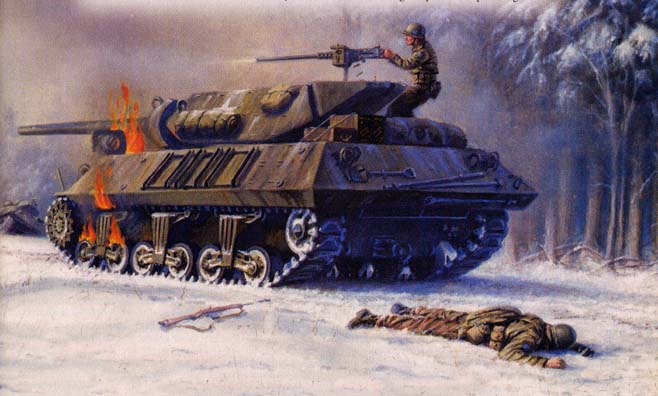
|
